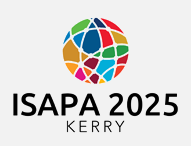Start Date
19-6-2025 10:30 AM
End Date
19-6-2025 12:00 PM
Abstract
Introduction
Spatial barriers significantly hinder sports participation for people with impairments (Jaarsma et al., 2014). This study aims to develop standards for accessible sports facility design through three interconnected research projects, utilizing participatory approaches that involve different groups of people with impairments (Vaughn & Jacquez, 2020). The presentation will examine the potential and challenges of various participation formats based on empirical findings.
Methodology
• IBASS (Indicators of Accessibility for Sports Facilities): Document analysis (N=16) of accessibility guidelines to identify specific criteria, supplemented by expert interviews (N=18) on prioritization.
• NoBarS!: Quantitative measurement (N=15) of accessibility in sports facilities, validated through site visits (N=75) with users with diverse impairments.
• ACCERT (Certification of Accessible Sports Facilities): Delphi survey (N=12 organizations) with representatives of people with impairments to prioritize accessibility criteria.
Results
Findings across all sub-studies reveal a reluctance to prioritize accessibility criteria, fearing exclusion of certain user groups. Participants struggled to distinguish their own perspective from a broader view of accessibility. They stressed the need to consider diverse perspectives and local needs. A "wheelchair bias" was noted in the documentation, with disproportionate attention to wheelchair users over other groups. While prioritization may be necessary due to practical limits, involving people with impairments was deemed essential for true inclusivity.
Conclusions
The study highlights a tension between general and specific accessibility needs. Local participation of those affected is vital, especially when prioritization is needed, but it poses challenges like conflicting interests and imbalanced representation. A key challenge for research lies in balancing participation formats with standards/norms.
Recommended Citation
Wibowo, Jonas and Müller, Lasse, "Participation of People with Impairments in Shaping Accessible Sports Facility Standards: Opportunities and Obstacles" (2025). International Symposium of Adapted Physical Activity and International Symposium on Physical Activity and Visual Impairment and Deafblindness. 19.
https://sword.mtu.ie/isapa/2025/day4/19
Participation of People with Impairments in Shaping Accessible Sports Facility Standards: Opportunities and Obstacles
Introduction
Spatial barriers significantly hinder sports participation for people with impairments (Jaarsma et al., 2014). This study aims to develop standards for accessible sports facility design through three interconnected research projects, utilizing participatory approaches that involve different groups of people with impairments (Vaughn & Jacquez, 2020). The presentation will examine the potential and challenges of various participation formats based on empirical findings.
Methodology
• IBASS (Indicators of Accessibility for Sports Facilities): Document analysis (N=16) of accessibility guidelines to identify specific criteria, supplemented by expert interviews (N=18) on prioritization.
• NoBarS!: Quantitative measurement (N=15) of accessibility in sports facilities, validated through site visits (N=75) with users with diverse impairments.
• ACCERT (Certification of Accessible Sports Facilities): Delphi survey (N=12 organizations) with representatives of people with impairments to prioritize accessibility criteria.
Results
Findings across all sub-studies reveal a reluctance to prioritize accessibility criteria, fearing exclusion of certain user groups. Participants struggled to distinguish their own perspective from a broader view of accessibility. They stressed the need to consider diverse perspectives and local needs. A "wheelchair bias" was noted in the documentation, with disproportionate attention to wheelchair users over other groups. While prioritization may be necessary due to practical limits, involving people with impairments was deemed essential for true inclusivity.
Conclusions
The study highlights a tension between general and specific accessibility needs. Local participation of those affected is vital, especially when prioritization is needed, but it poses challenges like conflicting interests and imbalanced representation. A key challenge for research lies in balancing participation formats with standards/norms.

